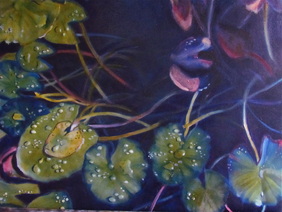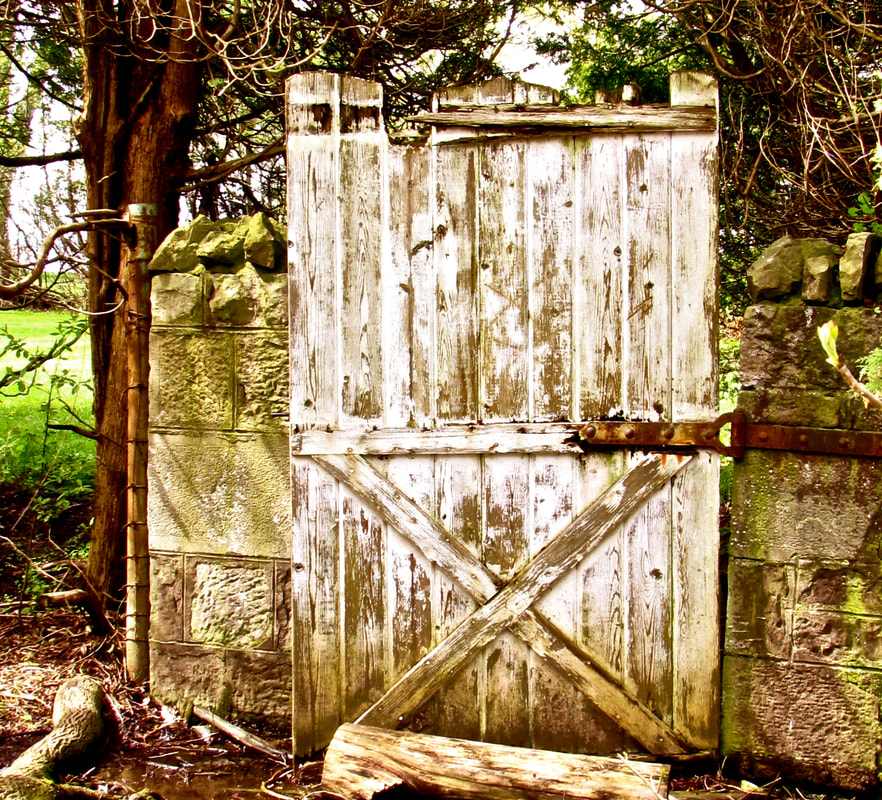 "The Floating World" #4 oil 20 x 24
"The Floating World" #4 oil 20 x 24 To be fair, I have always been out of whack; a lifetime of physio has been punctuated by each physiotherapist's enthusiastic announcement, "Your spine has a double S-curve!" as if this were an outcome devoutly to be wished. Years of Taoist Tai Chi have largely disguised my crooked nature but I must admit that the eyebrow thing has me flummoxed. What to do? Bleach one or dye the other? Shave and pencil in a Marlene Dietrich? Hardly a philosophical problem but something to think about. (I lead a very quiet life.)
Flowers can be of two basic shapes: actinimorphic, which means that they are essentially rounded and look the same no matter where you put the diameter (think carnation), and zygomorphic, which means that you can only cut them in half along one line (think pea flower). In both cases, the demand of symmetry is met. Most animals are the same, or at least that is their biological intent, but not all of us succeed.
On a side note, Brits refer to "crooked cops" as "bent coppers." Different phrases, same image, same meaning.
I think I shall have to embrace my asymmetry because it is certainly an essential element in my paintings and, indeed, in those of most visual artists. Most of us go to considerable trouble to avoid plunking the focal point in the middle. There are four sweet spots on any rectangle and even realistic images are placed to take advantage of one or even two of these. For example, I find drooping tulips far more interesting than fresh ones because they are lopsided and therefore graceful (note logic). In the waterlily series, the waterlily stems often issue from a single focal spot, leading the eye back over and over to the water-dropleted leaves. I see from my work-in-progress notes that I sometimes change my mind about how to weight a painting and may rethink the composition part way through, even turning the canvas upside-down at completion.
A friend owns two Tom Forestall paintings which cleverly solve the problem of which side is up. As always, Forestall fools around with canvas shapes. This time he chose rounds and mounted them on ball bearings so that the paintings could be rotated to new angles. Brilliant. And incredibly expensive to do.
In the interest of both time and money, I just put two wires on it and flip it at solstice. My Beloved has always thought it a compliment to call me a cheap date; I modestly agree.

 RSS Feed
RSS Feed
